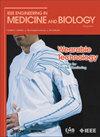Biomimetics: Biologically Inspired Technologies (Bar-Cohen, Y., Ed.; 2006) [Book Review]
IEEE Engineering in Medicine and Biology Magazine
Pub Date : 2007-07-16
DOI:10.1109/MEMB.2007.384087
引用次数: 13
Abstract
Various aspects of the field of biomimetics are covered in this 20-chapter, 42-contributor, 65-reviewer, single-editor textbook. The book starts with a very good overview of biomimetics and several of the applications humans have made that have parallels in nature. Among the topics covered are: sarcomere design, arrangement, and muscle function; mechanization of cognition; evolutionary robotics and open-ended design automation; genetic algorithms; robotic biomimesis of intelligent mobility, manipulation, and expression; bio-nanorobotics; biologically inspired optical systems; biological materials in engineering mechanisms; interfacing microelectronics and the human visual system; artificial support and replacement of human organs; and nastic structures. The book concludes with a summary of where the state of the art is on biomimicry and potential applications thereof. The textbook is very well referenced and reasonably well illustrated, with a 32-page color insert for the grey tone imbedded illustrations. Portions of the text could be used as introductory-level material for discussions of biomimetics' value in design. The text could possibly be used for a special topics course in biomimicry, but some parts are especially discipline-specific. The book is recommended as a reference text for many departments of biomedical, biological, and perhaps agricultural engineering.仿生学:生物启发技术(Bar-Cohen, Y., Ed.;2006)[书评]
仿生学领域的各个方面都涵盖在这20章,42贡献者,65审稿人,单一编辑教科书。这本书开始与一个非常好的概述仿生学和几个应用程序的人类已经作出了类似的性质。所涉及的主题包括:肌节的设计、排列和肌肉功能;认知机械化;进化机器人和开放式设计自动化;遗传算法;仿生机器人的智能移动、操作和表达;bio-nanorobotics;生物启发光学系统;工程机械中的生物材料;连接微电子和人类视觉系统;人工支持和替代人体器官;和弹性结构。这本书总结了在何处的艺术状态是仿生学及其潜在的应用。这本教科书有很好的参考和相当好的插图,有一个32页的颜色插入灰色色调嵌入插图。部分文本可以用作讨论仿生学在设计中的价值的入门级材料。文本可能用于仿生学的专题课程,但有些部分是特别学科特定的。这本书被推荐为生物医学,生物,也许农业工程的许多部门的参考文本。
本文章由计算机程序翻译,如有差异,请以英文原文为准。
求助全文
约1分钟内获得全文
求助全文

 求助内容:
求助内容: 应助结果提醒方式:
应助结果提醒方式:


